Haijin Liang
Best Practices for Distilling Large Language Models into BERT for Web Search Ranking
Nov 07, 2024Abstract:Recent studies have highlighted the significant potential of Large Language Models (LLMs) as zero-shot relevance rankers. These methods predominantly utilize prompt learning to assess the relevance between queries and documents by generating a ranked list of potential documents. Despite their promise, the substantial costs associated with LLMs pose a significant challenge for their direct implementation in commercial search systems. To overcome this barrier and fully exploit the capabilities of LLMs for text ranking, we explore techniques to transfer the ranking expertise of LLMs to a more compact model similar to BERT, using a ranking loss to enable the deployment of less resource-intensive models. Specifically, we enhance the training of LLMs through Continued Pre-Training, taking the query as input and the clicked title and summary as output. We then proceed with supervised fine-tuning of the LLM using a rank loss, assigning the final token as a representative of the entire sentence. Given the inherent characteristics of autoregressive language models, only the final token </s> can encapsulate all preceding tokens. Additionally, we introduce a hybrid point-wise and margin MSE loss to transfer the ranking knowledge from LLMs to smaller models like BERT. This method creates a viable solution for environments with strict resource constraints. Both offline and online evaluations have confirmed the efficacy of our approach, and our model has been successfully integrated into a commercial web search engine as of February 2024.
Type-enriched Hierarchical Contrastive Strategy for Fine-Grained Entity Typing
Aug 22, 2022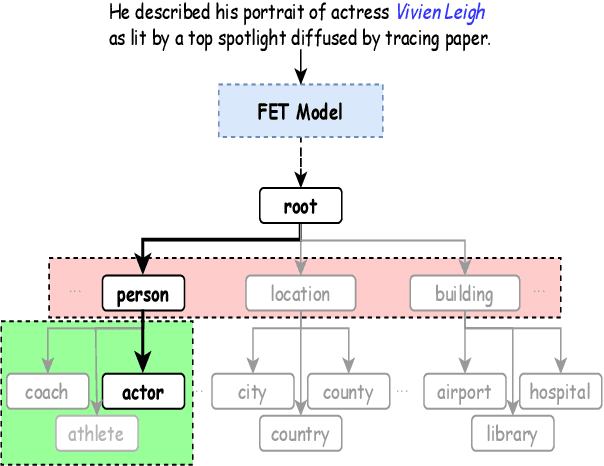

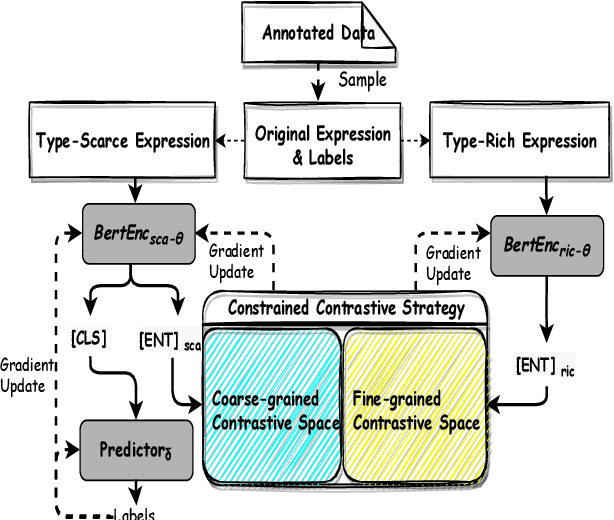
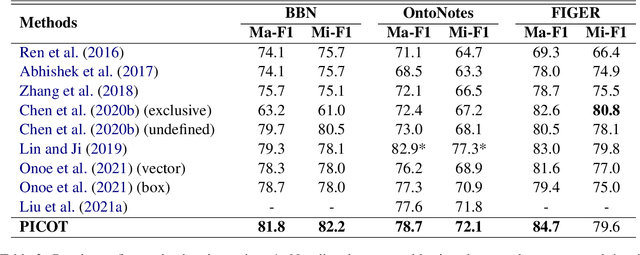
Abstract:Fine-grained entity typing (FET) aims to deduce specific semantic types of the entity mentions in text. Modern methods for FET mainly focus on learning what a certain type looks like. And few works directly model the type differences, that is, let models know the extent that one type is different from others. To alleviate this problem, we propose a type-enriched hierarchical contrastive strategy for FET. Our method can directly model the differences between hierarchical types and improve the ability to distinguish multi-grained similar types. On the one hand, we embed type into entity contexts to make type information directly perceptible. On the other hand, we design a constrained contrastive strategy on the hierarchical structure to directly model the type differences, which can simultaneously perceive the distinguishability between types at different granularity. Experimental results on three benchmarks, BBN, OntoNotes, and FIGER show that our method achieves significant performance on FET by effectively modeling type differences.
ChiQA: A Large Scale Image-based Real-World Question Answering Dataset for Multi-Modal Understanding
Aug 05, 2022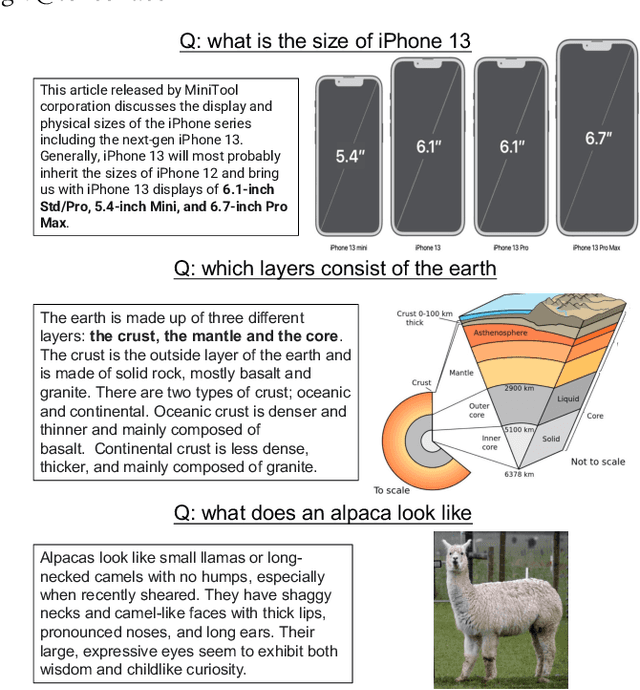


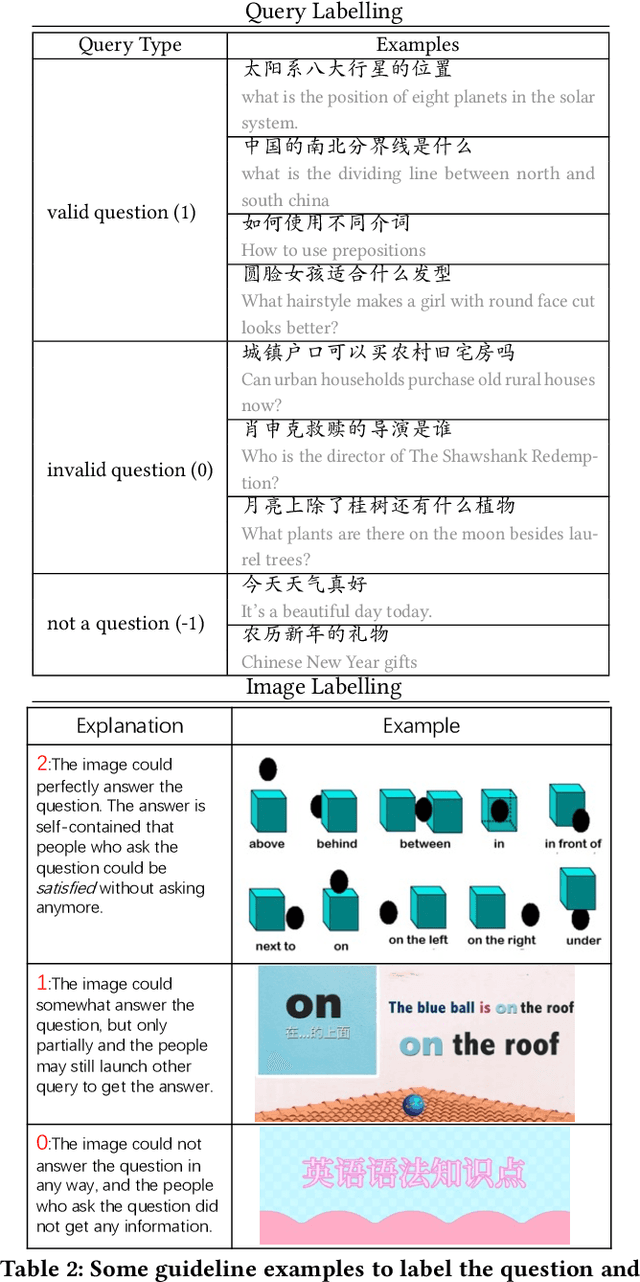
Abstract:Visual question answering is an important task in both natural language and vision understanding. However, in most of the public visual question answering datasets such as VQA, CLEVR, the questions are human generated that specific to the given image, such as `What color are her eyes?'. The human generated crowdsourcing questions are relatively simple and sometimes have the bias toward certain entities or attributes. In this paper, we introduce a new question answering dataset based on image-ChiQA. It contains the real-world queries issued by internet users, combined with several related open-domain images. The system should determine whether the image could answer the question or not. Different from previous VQA datasets, the questions are real-world image-independent queries that are more various and unbiased. Compared with previous image-retrieval or image-caption datasets, the ChiQA not only measures the relatedness but also measures the answerability, which demands more fine-grained vision and language reasoning. ChiQA contains more than 40K questions and more than 200K question-images pairs. A three-level 2/1/0 label is assigned to each pair indicating perfect answer, partially answer and irrelevant. Data analysis shows ChiQA requires a deep understanding of both language and vision, including grounding, comparisons, and reading. We evaluate several state-of-the-art visual-language models such as ALBEF, demonstrating that there is still a large room for improvements on ChiQA.
Bridging the Gap Between Training and Inference of Bayesian Controllable Language Models
Jun 11, 2022



Abstract:Large-scale pre-trained language models have achieved great success on natural language generation tasks. However, it is difficult to control the pre-trained language models to generate sentences with the desired attribute such as topic and sentiment, etc. Recently, Bayesian Controllable Language Models (BCLMs) have been shown to be efficient in controllable language generation. Rather than fine-tuning the parameters of pre-trained language models, BCLMs use external discriminators to guide the generation of pre-trained language models. However, the mismatch between training and inference of BCLMs limits the performance of the models. To address the problem, in this work we propose a "Gemini Discriminator" for controllable language generation which alleviates the mismatch problem with a small computational cost. We tested our method on two controllable language generation tasks: sentiment control and topic control. On both tasks, our method reached achieved new state-of-the-art results in automatic and human evaluations.
 Add to Chrome
Add to Chrome Add to Firefox
Add to Firefox Add to Edge
Add to Edge